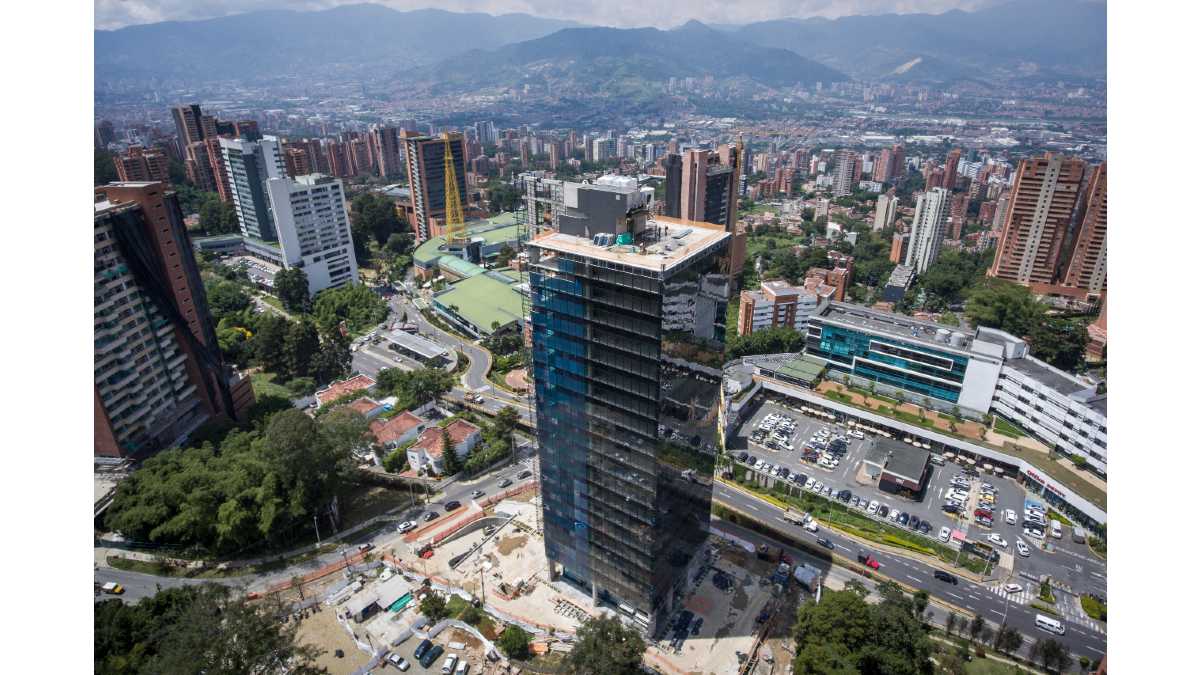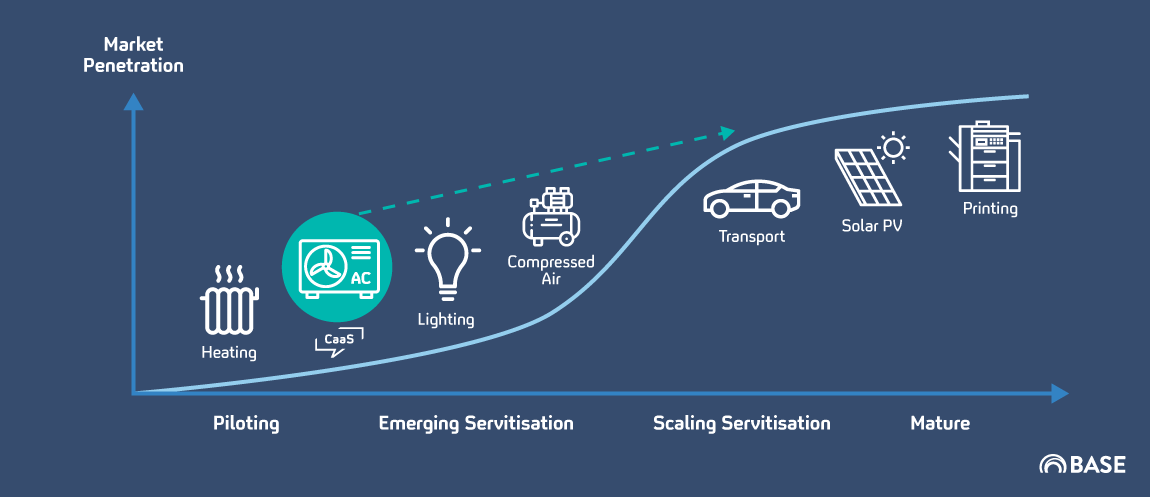 Latin America. Mechanical cooling (air conditioning and refrigeration) is a huge challenge in addressing the global climate emergency. Air conditioning alone accounts for 10% of global electricity consumption, equivalent to 2.5 times the use of electricity in Africa (EIA: The Future of Cooling). As the climate warms, the economy grows, and the world's population increases, cheap, inefficient, and polluting cooling systems are becoming more prolific, especially in the developing economies of Africa, Asia, and the Americas. Growing the number of these systems could triple the demand for electricity for cooling by 2050, equivalent to a third of all current electricity use.
Latin America. Mechanical cooling (air conditioning and refrigeration) is a huge challenge in addressing the global climate emergency. Air conditioning alone accounts for 10% of global electricity consumption, equivalent to 2.5 times the use of electricity in Africa (EIA: The Future of Cooling). As the climate warms, the economy grows, and the world's population increases, cheap, inefficient, and polluting cooling systems are becoming more prolific, especially in the developing economies of Africa, Asia, and the Americas. Growing the number of these systems could triple the demand for electricity for cooling by 2050, equivalent to a third of all current electricity use.
Although energy efficiency technologies are available and their economic benefits are evident, there are several obstacles to their adoption, such as high investment costs, perceived increased return risk, and other end-user investment priorities.
The servitization business model overcomes these barriers. It represents an effective way to accelerate the energy efficiency investments needed to achieve a low-carbon economy and thus achieve the goals of the Paris Agreement, while helping the economy recover more quickly from the COVID-19 pandemic.
"The climate emergency demands that we completely rethink our approach to cooling, to reduce emissions, reduce waste and improve livelihoods, all while keeping costs low for end users. The refrigeration-as-a-service business model is providing a blueprint to do just that, establishing a service-based model for refrigeration that is transforming a massive global market for refrigeration customers, technology manufacturers and investors," says Carla Della Maggiora, senior climate and environmental finance specialist at BASE (the Basel Agency for Sustainable Energy). a Swiss foundation, specialized partner of the United Nations for the Environment and pioneer of the CaaS initiative.
The servitization model is not new; its adoption is growing rapidly in many sectors. The following figure illustrates some sectors where the model has already been applied. Examples include printing company Xerox, which offers "pay per copy," and SunEdison, which has pioneered power purchase agreements (PPAs) for solar PV. Lighting company Signify has also adopted the model with its light-as-a-service product, which has been deployed at Amsterdam's Schiphol Airport and elsewhere.

Servitization in the cooling sector - Cooling as a Service
The Cooling as a Service Initiative (CaaS-initiative) is a global effort launched in early 2019 by BASE to increase and accelerate investments in clean and efficient cooling systems by utilizing the Cooling as a Service business model. Currently, the CaaS initiative is operating in Africa, Latin America and Asia. The initiative is supported by a dedicated group of partners to disseminate the model, build capacity and implement the model in different sectors and regions.
CaaS makes efficient, high-tech cooling systems compete with cheaper and less efficient systems, using a pay-as-you-go model. Users do not purchase the equipment, so the higher investment costs of modern cooling systems are avoided. Instead, users pay a monthly fee, based on the amount of cooling used. This fee includes maintenance, repairs and running costs such as electricity and water, which reduces the "headaches" associated with ensuring its continued operation and guarantees the operating time of the cooling system.
Since service providers retain ownership of refrigeration technology, they are interested in providing advanced and reliable systems that require minimal operation and maintenance. It also makes business sense for suppliers to offer the most efficient technology, as electricity and water costs account for 80% of the costs over the life of this equipment.
The Cooling as a Service model can be applied to various sectors, from industrial and commercial buildings, such as hospitals, office buildings, airports, data centers, supermarkets, airports and hotels, to cold storage for the agricultural and health sectors.
Like power purchase agreements (PPAs), which enabled the rapid adoption of solar PV by allowing customers to purchase kWhs of solar instead of having to invest in the panels themselves, CaaS is expected to mimic this, becoming the model of choice for companies around the world.
The CaaS market
Currently, the value of cooling assets under the CaaS modality exceeds 50 million dollars, indicating a huge demand for sustainable, cost-effective and efficient cooling worldwide. CaaS is saving more than 68 GWh of electricity and saving 36,000 tons of CO2 emissions per year. This is equivalent to more than 500,000 tons of CO2 equivalent during the 15 years of contractual life of these projects. Interest in the model has grown considerably, and the CaaS Alliance – a group of organizations committed to the implementation and generalization of the CaaS model worldwide – today has more than 50 members, including major technology providers.
Interest in this model is expected to continue to grow significantly, as the refrigeration market will reach more than $1.5 trillion in investments over the next 10 years.
Case Study of CaaS in Latin America (office building in Medellin, Colombia - Top image)
The need: Grupo Q in Medellin, Colombia, was constructing a new building intended to house 100 offices. The goal was to offer its occupants a high-quality building (LEED certified) with the best comfort standards and optimize capital expenditures.
The solution: MGM Innova Group designed an air conditioning solution that included a high-efficiency centralized air conditioning system, with valves to measure the amount of cold supplied to each user. MGM Innova Group carried out the investment in its entirety and invoiced a monthly payment to each office according to a Cooling as a Service model.
Proceeds: Both the customer and end users enjoy a high-quality air conditioning system, while focusing on their core business and avoiding capital expenditures. The system represents an annual energy saving of about 1.2 GWh, while greenhouse gas emissions are reduced by about 440 tons of CO2e/year. (This is because the heating, ventilation and air conditioning system was redesigned after deciding to proceed with the CaaS model.)
Read the full case study here and watch the video here.
1. BASE estimates with data from the "Economist Cooling Imperative" (Calculation based on the following data: the annual cooling market will increase to 170,000 million dollars in 2030, compared to 135,000 million dollars in 2018. Assuming a linear increase, this equates to about $1.5 million over 10 years, from 2020 to 2030.)
* Author: Carla Della Magiora, Basel Agency for Sustainable Energy.


























Leave your comment